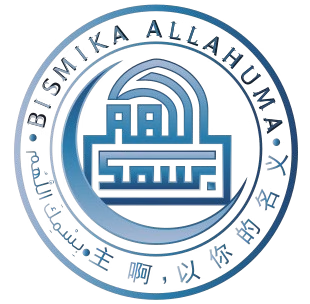The Christians are fond of celebrating the death of their man-god (whom they claim to be Jesus, peace be upon him) every year, although it does boggle the mind as to why would someone accept the fact that their god can actually “die”. However as Muslims, we believe that the claim concerning Jesus (P) is false and full of conjectures. A mighty Prophet of God (as we believe Jesus certainly is) would never had to bear the agony of being crucified at the hands of his enemies.
As it stands, we would also like to note that to substantiate our claims, there are various contradictions regarding the accounts on Jesus’ trials, death and resurrection which appear throughout the New Testament. The following list of Bible contradictions concerning the trials, the crucifixion and the resurrection are listed below along with the relevant Bible references.
A. THE TRIALS
1. Where was Jesus taken immediately after his arrest ?
a. Matthew, Mark and Luke say that Jesus was taken directly to the high priest (Matthew 26:57, Mark 14:53 and Luke 22:54).
b. John says that Jesus was taken first to Annas, the father-in-law of the high priest (John 18:13) who, after an indeterminate period of time, sent Jesus to the high priest (John 18:24).
2. When did the priests and scribes gather together to question Jesus ?
a. Matthew 26:57 says that on the night Jesus was arrested the priests and scribes were gathered together prior to Jesus being brought to the high priest.
b. Mark 14:53 says the priests and scribes gathered together on the night of Jesus’ arrest after Jesus was brought to the high priest.
c. Luke 22:66 says the priests and scribes assembled the day after Jesus was arrested.
d. John mentions only the high priest — no other priests or scribes play a role in questioning Jesus.
3. Was Jesus questioned by Herod ?
a. Luke says that Pilate sent Jesus to Herod who questioned Jesus at length and then returned Jesus to Pilate (Luke 23:7 – 11).
b. Matthew, Mark and John make no mention of Herod. This, in itself, means nothing, but it brings about another contradiction later.
4. Who was responsible for Jesus’ death, Pilate or the Jews ?
The Biblical account of Pilate’s offer to release Jesus but the Jews demanding the release of Barabbas contains both contradictions and historical inaccuracies.
a. What had Barabbas done ?
1. Mark 15:7 and Luke 23:19 say that Barabbas was guilty of insurrection and murder.
2. John 18:40 says that Barabbas was a robber.
b. Pilate’s “custom” of releasing a prisoner at Passover.
This is a historical inaccuracy -– the only authority given by Rome to a Roman governor in situations like this was postponement of execution until after the religious festival. Release was out of the question. It is included in the gospels for the sole purpose of further removing blame for Jesus’ death from Pilate and placing it on the Jews.
c. Pilate gives in to the mob.
The gospels have Pilate giving in to an unruly mob. This is ridiculous in light of Pilate’s previous and subsequent history. Josephus tells us that Pilate’s method of crowd control was to send his soldiers into the mob and beat them (often killing them) into submission. Pilate was eventually recalled to Rome because of his brutality.
5. Who put the robe on Jesus ?
a. Matthew 27:28, Mark 15:17 and John 19:2 say that after Pilate had Jesus scourged and turned over to his soldiers to be crucified, the soldiers placed a scarlet or purple robe on Jesus as well as a crown of thorns.
b. Luke 23:11, in contradiction to Matthew, Mark and John, says that the robe was placed on Jesus much earlier by Herod and his soldiers. Luke mentions no crown of thorns.
B. THE CRUCIFIXION
1. Crucified between two robbers
Matthew 27:38 and Mark 15:27 say that Jesus was crucified between two robbers (Luke just calls them criminals ; John simply calls them men). It is a historical fact that the Romans did not crucify robbers. Crucifixion was reserved for insurrectionists and rebellious slaves.
2. Peter and Mary near the cross
When the gospel writers mention Jesus talking to his mother and to Peter from the cross, they run afoul of another historical fact – the Roman soldiers closely guarded the places of execution, and nobody was allowed near (least of all friends and family who might attempt to help the condemned person).
3. The opened tombs
According to Matthew 27:51 – 53, at the moment Jesus died there was an earthquake that opened tombs and many people were raised from the dead. For some reason they stayed in their tombs until after Jesus was resurrected, at which time they went into Jerusalem and were seen by many people.
Here Matthew gets too dramatic for his own good. If many people came back to life and were seen by many people, it must have created quite a stir (even if the corpses were in pretty good shape!). Yet Matthew seems to be the only person aware of this happening — historians of that time certainly know nothing of it — neither do the other gospel writers.
C. THE RESURRECTION
1. Who found the empty tomb ?
a. According to Matthew 28:1, only “Mary Magdalene and the other Mary.”
b. According to Mark 16:1, “Mary Magdalene, and Mary the mother of James, and Salome.”
c. According to Luke 23:55, 24:1 and 24:10, “the women who had come with him out of Galilee.” Among these women were “Mary Magdalene and Joanna and Mary the mother of James.” Luke indicates in verse 24:10 that there were at least two others.
d. According to John 20:1 – 4, Mary Magdalene went to the tomb alone, saw the stone removed, ran to find Peter, and returned to the tomb with Peter and another disciple.
2. Who did they find at the tomb ?
a. According to Matthew 28:2 – 4, an angel of the Lord with an appearance like lightning was sitting on the stone that had been rolled away. Also present were the guards that Pilate had contributed. On the way back from the tomb the women meet Jesus (Matthew 28:9).
b. According to Mark 16:5, a young man in a white robe was sitting inside the tomb.
c. According to Luke 24:4, two men in dazzling apparel. It is not clear if the men were inside the tomb or outside of it.
d. According to John 20:4 – 14, Mary and Peter and the other disciple initially find just an empty tomb. Peter and the other disciple enter the tomb and find only the wrappings. Then Peter and the other disciple leave and Mary looks in the tomb to find two angels in white. After a short conversation with the angels, Mary turns around to find Jesus.
3. Who did the women tell about the empty tomb ?
a. According to Mark 16:8, “they said nothing to anyone.”
b. According to Matthew 28:8, they “ran to report it to His disciples.”
c. According to Luke 24:9, “they reported these things to the eleven and to all the rest.”
d. According to John 20:18, Mary Magdalene announces to the disciples that she has seen the Lord. 

